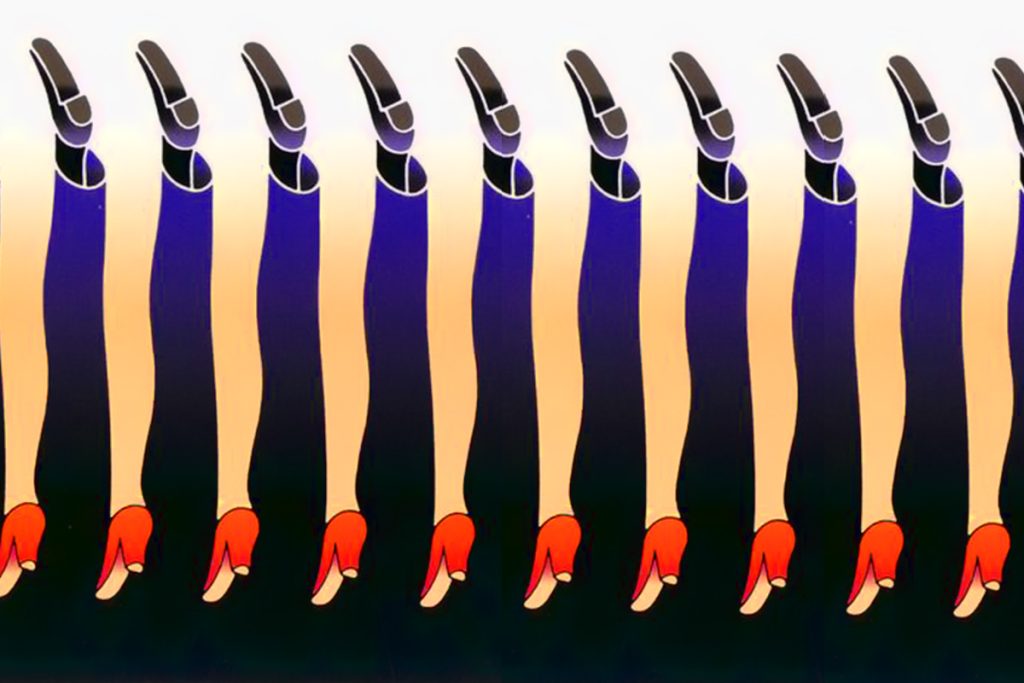Why not try this personality test through an optical illusion

Optical illusions are captivating visual stimuli that deceive our minds and unveil a wealth of information upon first glance. Intriguingly, these illusions also serve as mirrors reflecting our personalities, offering profound insights into our perceptions of the world and ourselves.
While not always absolute or directly relevant, they can sometimes hold relevance. The optical illusion shown below, crafted by the late Japanese artist Shigeo Fukuda in 1975, presents an image initially depicting both male and female legs.
Now, it’s up to you to discern what caught your eye first. This image delves into the realm of communication skills intertwined with concealed personality characteristics.

Your initial perception in the image is of the male legs
If your initial perception in the image is of the male legs, it suggests that you generally possess a direct and assertive manner of communication.
You typically exhibit a direct and assertive communication approach. Your interactions are characterized by straightforwardness, prioritizing clarity and efficiency over ambiguity. Moreover, you demonstrate leadership qualities with your decisive nature and maintain a pragmatic stance in problem-solving. Confidence and independence drive your goal-oriented mindset. Your communication style favors clear and concise expression, as you aren’t hesitant to voice your opinions, rendering you an effective communicator both personally and professionally.
Your attributes make you well-suited for leadership positions such as manager, entrepreneur, or CEO. Career paths in Journalism, Law, and Engineering align with your strengths in direct communication and decision-making, enabling you to excel in these fields.
Your initial perception in the image is of the female legs
If the first thing you noticed in the illusion were the female legs, it indicates that you possess an empathetic communication style. You tend to view others with sensitivity and excel as a listener and mediator. Your interactions are characterized by patience, understanding, and a commitment to harmony.
Additionally, you exhibit creativity, open-mindedness, and a keen intuition. You place value on emotional connections and are adept at interpreting subtle cues, allowing you to navigate social dynamics adeptly and forge meaningful relationships.
Ideal career paths for you may include roles such as counselor, human resources professional, or social worker. However, given your creative inclination, you may also thrive in fields like writing, marketing, and graphic design, where your intuition and openness can be valuable assets.

Are optical illusions genuine or deceptive?
Optical illusions are renowned for eliciting unique perceptual experiences, where information stemming from real external stimuli often results in a misleading perception, also known as a false impression. This can pertain to any object or event that serves as the source of stimulation.
Are optical illusion personality tests significant?
Optical illusions aren’t merely about perception; they serve as reflective mirrors of our underlying traits, based on what our eyes initially perceive. Optical illusion personality tests help determine what we notice first and the insights they provide into our unique personality traits.
Optical illusion personality tests play a crucial role in uncovering these hidden facets of our psyche. By analyzing our initial reactions to these visual stimuli, these tests provide a window into our unique personality traits and behavioral tendencies. Whether we gravitate towards certain shapes, colors, or patterns, each response offers clues about our temperament, cognitive style, and emotional disposition.

What lies behind optical illusions?
Our senses occasionally gather information and transmit it to the brain, which doesn’t always interpret the data accurately but instead constructs a perception of the world or object observed. This implies that the brain sometimes fills in gaps when presented with incomplete information, generating an image that isn’t actually present.
This process can lead to fascinating phenomena where the brain fills in gaps or makes assumptions based on incomplete information. As a result, we may perceive illusions or distortions that deviate from the actual physical properties of the stimuli.
These perceptual discrepancies highlight the complex interplay between sensory input and cognitive processing, showcasing the brain’s remarkable ability to construct our perception of reality.



















